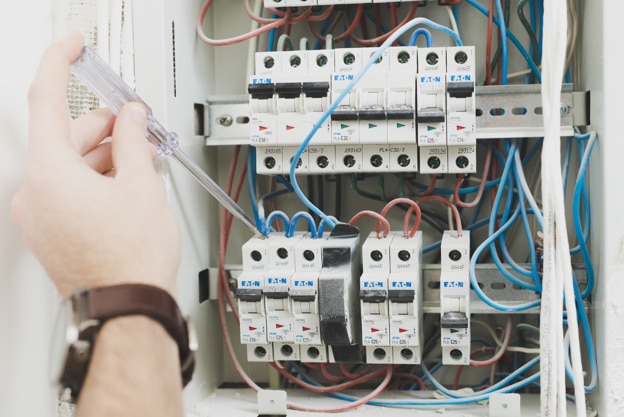Any commercial facility manager knows how important scheduled light maintenance is to keep things running smoothly without any glitch. They need to plan how often to clean the luminaries and lights, when electric lighting services are needed, and how to keep up with other maintenance needs, such as light changing needs. Plus, they also need to find a reasonable balance between maintenance and operating hours.

Not only do maintenance and repairing work interfere with regular business operations but also affect overall costs. A higher frequency of maintenance cycles also means a higher maintenance factor.
Note: A lower maintenance factor points to higher luminous flux values and more lamps, luminaires, and investment costs.
As you know, LEDs have the longest lifespan and show less lumen depreciation than their counterparts. However, even with LEDs, the illumination level decreases over time. There are many factors responsible for this, such as dirty surfaces, fixture failure, and so on. So, what needs to be done is to take steps to reduce the effects of those external factors.
Here are a few maintenance factors that you should keep an eye on:
Room surface maintenance factor
It refers to the ratio of the room surface reflectance before it is cleaned to the room surface reflectance after it is cleaned. The lighting of the room is reduced based on the soiling of the room. When room surfaces are dirty, they are less likely to reflect light. The dirtier the room, the lower the maintenance factor will be.
Luminaire Maintenance Factor
It is the ratio of the luminaires luminous flux before cleaning to the luminaires luminous flux after cleaning. Plus, this factor also depends on the luminaire construction, design (whether it is open or a closed one), and environmental conditions (such as dirty or clean). The better you keep your luminaries protected from dust, the higher the maintenance factor you will enjoy.
Fixture Maintenance Factor
It is the ratio of luminous flux at a specific time compared to that of the new lamp. It describes the lamp aging or the reduction of light intensity over time. So, before buying, see the manufacturer’s comprehensive tables that explain lamps’ luminous flux behavior.
Fixture Survival Factor
This factor relies on the service lifespan of the lamp. Some lamp lifetimes are degraded by frequent switching. So, it is another factor that you should look for in the manufacturer’s provided tables that explain lamp survival factor. If a lamp is not working anymore, you need to replace it.
LEDs can Live Longer Than Your Facility and That Can Be a Good or Bad Thing for You. Why???
An accurate LLMF (Lamp Lumen Maintenance Factor) is essential to find the correct maintenance factor for an electric lighting project. It presents various benefits in terms of planning for a client’s electric lighting requirements. For instance, with such a long lifespan of LED lights, a client may want to consider whether they need a 50,000-hour life in their lighting system or not.
At first glance, you might think that the longer the life the better. However, if you are leasing an office space for only seven years, is it really worth investing in a lighting system that will last between 12 and 15 years? Most probably, not! Thus, when you open a new facility and want to get the best out of your lighting system, choose to hire electric lighting services that help you to look at several LED options along with their benefits and decide what lighting solution will be best for your commercial facility.
